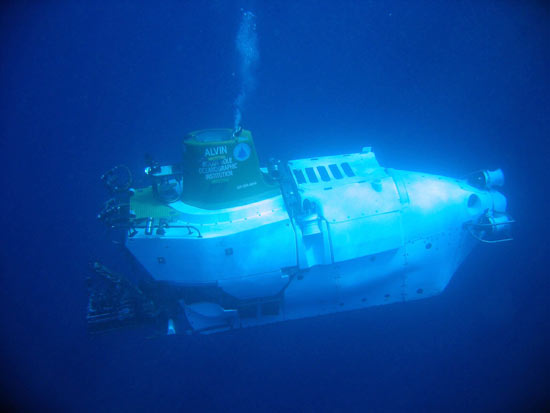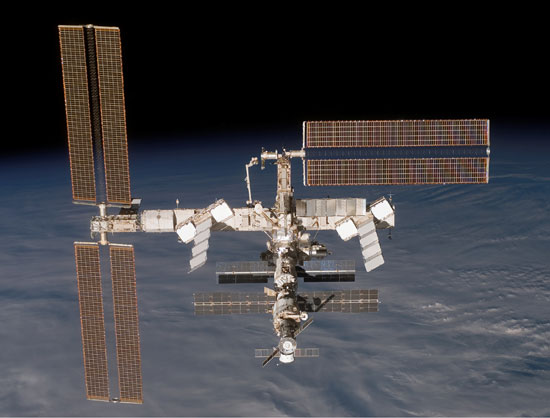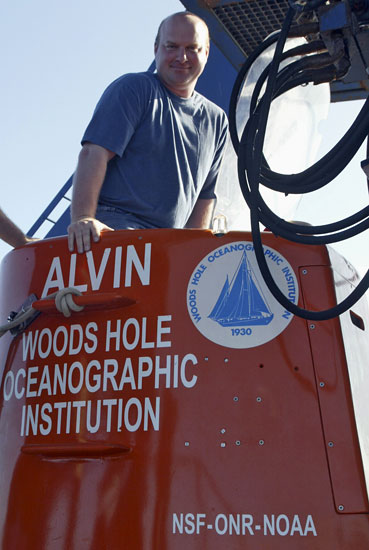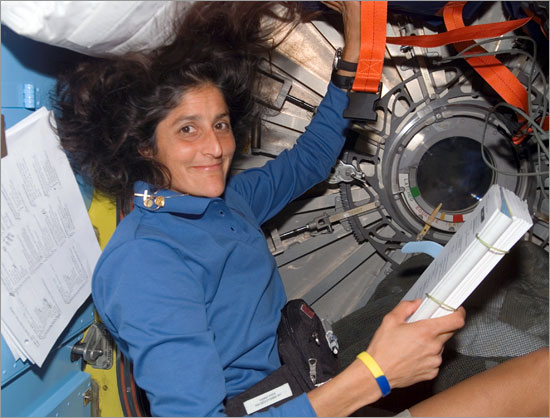From the Seafloor to the Space Station
Listen to the first call between ocean explorers and astronauts
UPDATE (EVENING OF JAN. 26) -- The recorded conversation between Tim Shank and Suni Williams is now available on the web. Click here for more information. Please check this page during the week of January 29 for updates on the conversation -- we hope to have transcripts, answers to questions, and re-broadcast times.
Join us for a rare conversation between two people on the edges of human exploration, as the Woods Hole Oceanographic Institution (WHOI) and the National Aeronautics and Space Administration (NASA) hold the first conversation from the deep ocean to the edge of space.
He is two miles under water; she is 200 miles up in the atmosphere. They both work in small, confined spaces, looking out onto vast, unpopulated expanses. He is out of the reach of sunlight, buried under a blanket of perpetual darkness; she sees the Sun rise 15 times a day...if she has any time to look for it. Both are explorers of the last frontiers.
WHOI marine biologist Tim Shank, diving in the Alvin submersible, will compare notes on life, science, and exploration with NASA astronaut Sunita “Suni” Williams as she orbits on the International Space Station. And you can be a part of that conversation: Students, educators, and science lovers submitted questions for Tim and Suni to answer on the air and the web. Visit the Questions and Answers page to read replies, which should be available by January 29.
To learn more about the oceanographic expedition to East Pacific Rise, 500 miles off the coast of Mexico, visit the Student Explorer at Sea (SEAS) program, which provides updates from the research team, lessons for students and teachers, and gee-whiz facts about life and work at sea. The expedition is funded by the National Science Foundation as part of its Ridge2000 research initiative. You can also learn more about deep-sea research at Venture Deep Ocean.
To follow the activities of astronaut Sunita Williams and her colleagues as they continue the construction of the space station and carry out science experiments on plants, materials, and themselves, read her online journal, which is updated several times per month.
For a map of the location of Alvin and its tender ship Atlantis, click here. To see the current location of the International Space Station, click here. To learn how to view the ISS in the skies above your town, click here.








